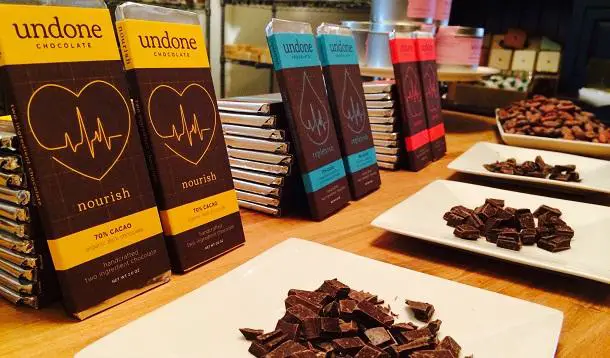
Chocolate is a typically sweet, usually brown food preparation of Theobroma cacao seeds, roasted and ground. It is made in the form of a liquid, paste, or in a block, or used as a flavouring ingredient in other foods.
Chocolate has become one of the most popular food types and flavours in the world, and a vast number of foodstuffs involving chocolate have been created, particular desserts including cakes, pudding, mousse, chocolate brownies, and chocolate chip cookies. Many candies are filled with or coated with sweetened chocolate, and bars of solid chocolate and candy bars coated in chocolate are eaten as snacks.
History
Chocolate may be the “food of the gods,” but for most of its 4,000-year history, it was actually consumed as a bitter beverage rather than as a sweet edible treat. Anthropologists have found evidence that chocolate was produced by pre-Olmec cultures living in present-day Mexico as early as 1900 B.C. The ancient Mesoamericans who first cultivated cacao plants found in the tropical rainforests of Central America fermented, roasted and ground the cacao beans into a paste that they mixed with water, vanilla, honey, chili peppers and other spices to brew a frothy chocolate drink.
Olmec, Mayan and Aztec civilizations found chocolate to be an invigorating drink, mood enhancer and aphrodisiac, which led them to believe that it possessed mystical and spiritual qualities. The Mayans worshipped a god of cacao and reserved chocolate for rulers, warriors, priests and nobles at sacred ceremonies.
When the Aztecs began to dominate Mesoamerica in the 14th century, they craved cacao beans, which could not be grown in the dry highlands of central Mexico that were the heart of their civilization. The Aztecs traded with the Mayans for cocao beans, which were so coveted that they were used as currency. (In the 1500s, Aztecs could purchase a turkey hen for 100 beans.) By some accounts, the 16th-century Aztec emperor Montezuma drank three gallons of chocolate a day to increase his libido.
In the 1500s, Spanish conquistadors such as Hernán Cortés who sought gold and silver in Mexico returned instead with chocolate. Although the Spanish sweetened the bitter drink with cane sugar and cinnamon, one thing remained unchanged: chocolate was still a delectable symbol of luxury, wealth and power. Chocolate was sipped by royal lips, and only Spanish elites could afford the expensive import.
Spain managed to keep chocolate a savory secret for nearly a century, but when the daughter of Spanish King Philip III wed French King Louis XIII in 1615, she brought her love of chocolate with her to France. The popularity of chocolate quickly spread to other European courts, and aristocrats consumed it as a magic elixir with salubrious benefits. To slake their growing thirst for chocolate, European powers established colonial plantations in equatorial regions around the world to grow cacao and sugar. When diseases brought by the European explorers depleted the native Mesoamerican labor pool, African slaves were imported to work on the plantations and maintain the production of chocolate.
Chocolate remained an aristocratic nectar until Dutch chemist Coenraad Johannes van Houten in 1828 invented the cocoa press, which revolutionized chocolate-making. The cocoa press could squeeze the fatty cocoa butter from roasted cacao beans, leaving behind a dry cake that could be pulverized into a fine powder that could be mixed with liquids and other ingredients, poured into molds and solidified into edible, easily digestible chocolate. The innovation by van Houten ushered in the modern era of chocolate by enabling it to be used as a confectionary ingredient, and the resulting drop in production costs made chocolate affordable to the masses.
In 1847, British chocolate company J.S. Fry & Sons created the first solid edible chocolate bar from cocoa butter, cocoa powder and sugar. Rodolphe Lindt’s 1879 invention of the conching machine, which produced chocolate with a velvety texture and superior taste, and other advances allowed for the mass production of smooth, creamy milk chocolate on factory assembly lines. You don’t need to have a sweet tooth to recognize the familiar names of the family-owned companies such as Cadbury, Mars and Hershey that ushered in a chocolate boom in the late 1800s and early 1900s that has yet to abate. Today, the average American consumes 12 lbs. of chocolate each year, and more than $75 billion worldwide is spent on chocolate annually.